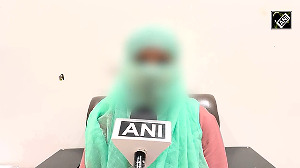India's Ministry of Surface Transport is well known as a cash cow for the political party in power, and thus for the minister in charge if he is so minded, because of the massive contracts involved. But T.R.Baalu, who was the minister in the last United Progressive Alliance government, surprisingly did not manage to make a success of India's 33,000km highway building programme, and ensure that a large number of contracts were placed and completed, during the five years that he was in charge.
Now Kamal Nath, a prominent Congress party politician who has been close to the Gandhi dynasty for 30 years, has been given the portfolio. Judging by his appearances on television the night he was appointed, and since, he seems happy with the job, even though its prestige and scope is far far less than the commerce and industry ministry that he ran for the past five years. My guess is that he will hold the post for a couple of years to get the ministry moving and do what he can with the full potential of the highways programme.
This is a story that shows how the muddle, contradictions, arguments and corruption that curiously generate much of India's success, can also sometimes block progress. It demonstrates the need for strong leadership at the top, which was lacking in the last UPA government, but which prime minister Manmohan Singh now has the stature to provide.
The mostly-four lane national highways programme did well when it was initiated by the 1998-2004 Bharatiya Janata Party-led NDA coalition government. Contracts awarded while the BJP was in power led to some 6,000kms (3,750 miles) being completed by the end of 2005 at a cost of about $7bn, mostly on the Golden Quadrilateral that links India's four biggest cities. There were of course massive delays because of slow land acquisition, corruption, bureaucratic lethargy, and extortion by gangsters and Naxalite (Maoist) rebels - but it was a success.
By the end of April this year however, the total completed had only gone up to just over 11,000kms, and awards of new contracts had slowed to such an extent that work was only started on 9,700kms compared with a five-year target of 16,000kms. The programme has now lost the momentum and drive of the BJP years, and urgently needs to be revived by Nath.
Baalu, who was in charge of shipping as well as highways, was one of two ministers from Tamil Nadu's DMK political party that prime minister Manmohan Singh did not want to appoint again last week. Singh successfully excluded Baalu, but had to agree to let the other minister, A.Raja, go back to his old job at telecoms, which is another ministry favoured by bounty-seeking politicians. Both Baalu and Raja have been frequently accused of inefficiency and corruption.
Baalu was much more interested in dredging the controversial Sethusamudram Canal between Tamil Nadu and Sri Lanka. This involves lucrative contracts and later there will be trans-shipping and port work which, it has been officially acknowledged, could benefit a trawling and fishing company in which two of his wives and sons are reported to have shares. Earlier Baalu was a controversial environment minister and, in the mid-1990s, a well-connected junior minister in the petroleum ministry that handles high-value oil imports.
He regularly tried to influence and even dominate the detailed functioning of the National Highways Authority of India, whose financially-sensitive responsibilities include drawing up initial lists of tenderers, and issuing partial and final completion certificates, as well as placing contracts. He changed the NHAI chairman five times in as many years when his wishes were not carried out - because, as a BJP spokesman euphemistically put it, of "his own whims and fancies".
Private sector BOP focus
There are several reasons for the poor performance and they are not all Baalu's fault. Initially the Congress-led UPA government did not seem to want to promote the programme because it had been such a success for the previous BJP prime minister, Atal Bihari Vajpayee, who took personal credit. Manmohan Singh ordered widespread six-laning of major four-lane highways, but there was little enthusiasm.
Much of the Vajpayee government's success had been due to heavy government funding. This was needed to get the construction programme moving quickly on highways that would not yield profits, as well as on those that could be operated as private sector toll roads.
The Planning Commission however did not like this approach and switched the emphasis to private sector financing, stopping primary government funding and allowing only built-operate-and transfer contracts. That virtually halted new contracts from the end of 2005.
A government Committee on Infrastructure was formed, serviced by the Commission, partly to keep a check on Baalu and his ministry, and partly to enforce the BOT system. This increased bureaucratic wrangling, and the committee took about two years to agree on a new model concession agreement and prepare associated forms of contract and procedural documents.
This new approach did not take sufficient account of support financing that contractors need on highways with unprofitable tolls, and subsidies offered to encourage investments were inadequate.
In policy terms, the Commission had arguably taken highway construction out of the government's "inclusive" approach to economic growth, where money is spent on uneconomic but socially desirable projects, and put it into the "exclusive" growth area where the private sector is expected to invest and reap profits.
The move was also disastrously timed because last year's economic crisis pushed the cost of financing up to 15-16%. Contractors lost interest in raising funds, and few were willing to bid for the BOT contracts. When tenders were invited last year on 60 projects, no bids were received on 38 and, of the 22 that were tendered, only 12 led on to fully-financed contracts. The NHAI has now amended designs to reduce construction costs and has put the 38 out for fresh tenders along with 22 more.
Companies complained not only about inadequate support funding, but also that the NHAI was inflexible in its approach and handed over sites without adequate land clearance. The NHAI wanted to increase concessionary "viability funding", but was blocked by the BOT-oriented infrastructure committee, though this is now being relaxed. (One source has told me that bureaucrats prefer government-run projects rather than BOT because it increases the opportunities for corruption both during construction, and on the collection of tolls).
Rival state projects
Complicating matters, state governments in Karnataka, Tamil Nadu, Gujarat. Uttar Pradesh and elsewhere have begun their own highway construction programmes, often without taking account of the national networks that they sometimes duplicate. State government ministers and bureaucrats see the potential for personal and party fund-raising, and are offering softer project terms than the NHAI's. As a result, they were getting bids from contractors last year that were shunning the NHAI.
Nath now inherits a highways programme that is beginning to show signs of recovering from years of bureaucratic and inter-government wrangling, unhappy contractors and massive corruption, in addition to all the usual delays that hit projects - plus the impact of the economic crisis.
He has said in the past few days that procedures should be eased and, most importantly, that new sources of funding should be found. He has the political clout to make this happen and turn round the muddle left by Baalu and he comes in an opportune time because economic and business confidence is recovering.
After the debacle of the special economic zones that Nath tried to introduce across the country in the last government, he now has a chance to prove himself on the highways.
Copyright The Financial Times Limited 2009







